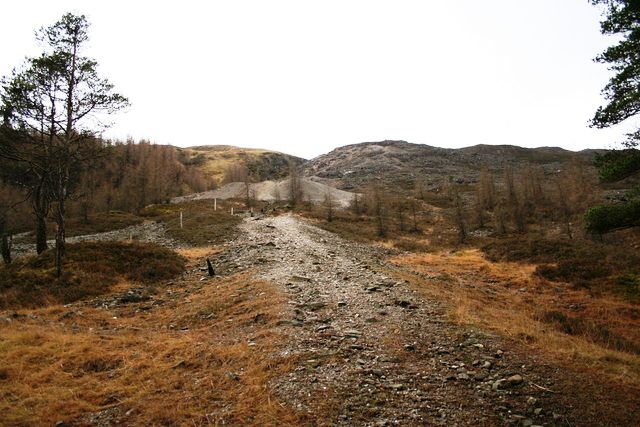
Tyndrum Mine
© Copyright Stuart MacInnes and licensed for reuse under this Creative Commons Licence
Sir Robert Clifton, of Nottinghamshire, took a mining lease of the Earl of Breadalbane’s extensive estate in 1730 and, in 1741, discovered a rich lead mine at Tyndrum.
The veins there follow the west side of the fault, and ten levels were driven into the Hard Vein, which runs up the northern slope of Stron nan Colan, and parts of the vein were worked by opencast. Typical names of the levels included McCallum’s, Bryan’s, MacDougal’s and Lubock’s
Clifton worked until 1745, when he was succeeded by the Company of Mine Adventurers of England. This company, which had mines in various parts of the UK, gave up the mines in 1760.
Other small companies had them until 1768, when the Scots Mining Company, which also had mines at Leadhills, took over. Its accounts show that the costs of getting Tyndrum lead to market were higher than the value of the lead, which explains the regular changes in ownership. It gave up in 1790 and the mines were mostly idle until 1858, when the Marquis of Breadalbane worked the mines until his death in 1862.
They were next worked by the Tyndrum Lead and Zinc Mines Ltd, which took the lease in 1916. It built a plant to treat the old dumps and also reworked some of the mines, but gave up around 1926.
Remains of the platforms for a dressing plant (erected just after WWII) and an overhead bucket system can still be examined at the Hard Vein, which on ascending – gives access to Tyndrum Main Vein on the east slope of the hillside.
Return to previous page
